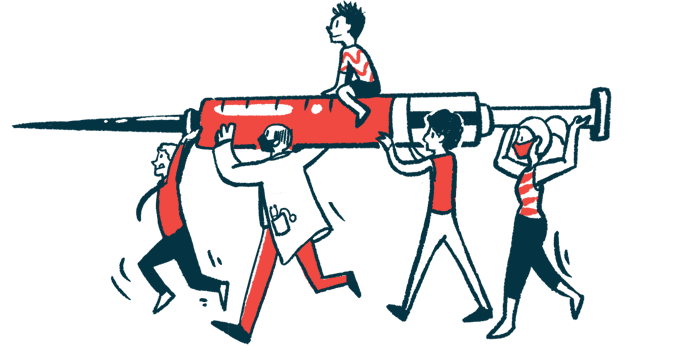Seelos’ SLS-005 Cleared as 5th Arm of HEALEY ALS Trial

Seelos Therapeutics’ experimental therapy SLS-005 (trehalose) will serve as the fifth arm of the multi-regimen HEALEY trial for amyotrophic lateral sclerosis (ALS), after being cleared by the U.S. Food and Drug Administration and the Mass General Brigham Institutional Review Board.
With this final regulatory authorization, Seelos may still meet its plans of starting patient dosing by the end of this month. SLS-005 will be evaluated in a pivotal Phase 2b/3 trial integrated into the HEALEY ALS Platform Trial (NCT04297683) — the first multi-regimen study in ALS, which already is testing four other potential treatments.
The simultaneous evaluation of multiple therapy candidates helps accelerate the identification and development of those showing the most promise, while reducing costs.
“We are immensely grateful to all the people living with ALS who have trusted our group and allowed us to continue our long but rewarding path towards finding a treatment for ALS,” Shafeeq Ladha, MD, co-lead investigator of the SLS-005 arm in the HEALEY trial, said in a press release. Ladha is a neurologist at the Gregory W. Fulton ALS and Neuromuscular Disease Center at Barrow Neurological Institute, in Phoenix.
The platform trial is being led by ALS specialists of the Sean M. Healey & AMG Center for ALS at Massachusetts General Hospital (MGH), in Boston. Adults with sporadic or familial ALS are being recruited at more than 50 U.S. trial sites; more information on contacts and locations can be found here.
“The addition of the fifth regimen continues this new approach of more rapidly testing new therapies for people with ALS,” said Merit Cudkowicz, MD, HEALEY’s principal investigator and sponsor, and the director of the Healey Center.
Seelos worked with the trial design committee to include SLS-005 as part of the platform.
Trehalose, the therapy’s active ingredient, is a natural autophagy-promoting sugar molecule found in plants, fungi, and bacteria. Autophagy is the process by which cells break down and recycle old or faulty proteins and components they no longer need, preventing their potentially toxic accumulation.
In preclinical studies, SLS-005 was shown to promote the clearance of ALS-associated TDP-43 and SOD1 proteins, delaying ALS progression and preserving motor neurons in animal models. TDP-43 and SOD1 are known to build up to toxic levels in ALS, contributing to nerve cell damage and death.
Administered directly into the bloodstream (intravenously), SLS-005 also can cross the blood-brain barrier, the highly selective membrane that prevents circulating microbes and potentially harmful molecules from reaching the central nervous system or CNS, comprised of the brain and spinal cord. This barrier is a common obstacle of CNS-targeted treatments.
SLS-005 was granted orphan drug designation by regulatory agencies in both the U.S. and the European Union. That designation is meant to speed the development and regulatory review of therapies for rare diseases.
HEALEY began dosing participants in August 2020 with its first three experimental therapies: UCB’s zilucoplan (NCT04436497), Biohaven Pharmaceuticals’ verdiperstat (NCT04436510), and Clene Nanomedicine’s CNM-Au8 (NCT04414345).
Pridopidine, developed by Prilenia Therapeutics, was later added as the trial’s fourth arm (NCT04615923), enrolling its first patient in January.
In each arm of the platform trial, 160 participants are randomly assigned to receive either the experimental treatment (120 patients) or a placebo (40 patients) for 24 weeks, or about six months. To strengthen the trial data, the placebo group will be shared between all regimens.
HEALEY’s main goal is to evaluate the effectiveness of each therapy at slowing disease progression, as assessed with the ALS Functional Rating Scale-Revised. Secondary goals include changes in lung function, muscle strength, and survival, as well as safety measures.
The trial is designed to add clinical sites, participants, and treatment candidates until a cure for ALS is discovered.
“We are grateful to all the foundations and individuals who support the HEALEY ALS Platform Trial, including but not limited to The AMG Charitable Foundation, Tackle ALS, the ALS Association, ALS Finding A Cure, ALS One and The Muscular Dystrophy Association,” added Cudkowicz, also chief of MGH’s department of neurology and a professor of neurology at Harvard Medical School.








